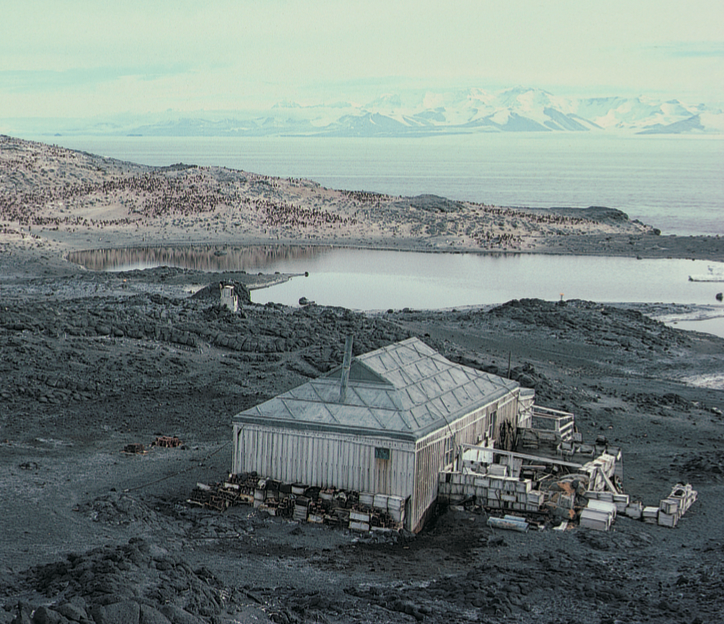Shackleton Hut Stonemasonry (All Gender)
Description

Monday - Friday, August 11th - 15th, 2025
7:00 AM - 6:00 PM
Tuition: $100
Lunch Included During Class Days
Camping available on site (full meals included for this option)
Learn how to work with stone and mortar int he Shackleton Hut and build dry stone walls outside. You'll get hands-on experience in the art and skill of stone wall construction: selecting native stones, mixing concrete, placing stones with aesthetic and structural considerations, and choosing tools and materials. Help build something that will last virtually forever.
New in 2025, courses in partnership with the Ely Folk School (Women-only and Mixed Gender) will build a replica of the timber frame Shackleton Hut at the Steger Center campus. This mixed-gender class will finish up the stone and mortar in the Hut and continue the dry stone walls elsewhere on the Center grounds.
In 1906, Ernest Shackleton built a hut on Antarctica during his attempt to reach the South Pole. He erected a timber frame hut to provide housing for his support team, comprising 16 men to live in for two and a half years. This became their base camp while Shackleton was attempting the South Pole; he ultimately made history by getting within 90 miles of the South Pole. The hut survived 100 mile-an-hour winds, storms, and endured over 100 years on the continent. The New Zealand Antarctic Trust did a 10-year renovation of the original hut and subsequently made a generous donation of the original architectural designs to the Steger Center for replication and educational purposes. In future years, the Steger Center Shackleton Hut will be used as a bunk-house for 16 people (students, staff, volunteers) and will feature historical black and white images of the Shackleton expedition.
In Will Steger's Words: Responsible, lasting construction skills draw from Ely’s natural surroundings. Greenstone areas around Ely make up some of the oldest known bedrock on Earth. In partnership with the Ely Folk School, a select group of craftspeople will learn stonemason skills that will continue the Steger Center’s legacy of using natural, local resources to blend exquisitely into its northern Minnesota surroundings. The Boundary Waters Canoe Area (BWCA) contains four elements: sky, water, forest, and the Canadian Shield. The Steger Center, which borders the BWCA on three sides, is built on Ely Greenstone, some of the oldest exposed bedrock in the world. It was first formed 2.2 billion years ago as silt at the bottom of a warm shallow ocean. Through the process of plate tectonics this region was heaved up into a mountain range the size of the Rockies that over time was eroded down to its elevation of 1500 feet. In recent geological time numerous glacial epochs scoured the surface to form the numerous lakes of the boreal forests. Stone has always been a mainstay in the construction at the Center and its surrounding campus. In 1965 I first mixed sand and cement (which I canoed and portaged in) to build a stone fireplace for my cabin. Later I built a stone root cellar from sand and cement that I dogsledded in. The simple process of stone-building is what drew me as much as the permanence of the final product. During the crossing of Antarctica I journaled about working silently under the hot sun, the feel of the rock in my hands, the smell of rock and water in the dry heat, the sweet sounds of birds conversing with each other. Stone-building is a Zen practice. It is the definition of being in the moment. The stonework that has been produced by masters and their apprentices is simply amazing. I am very proud that a number of our students are stonemasons today and many more have built their own walls and foundations.
This class is best suited for people 18+ of any and all gender identities. No experience is necessary! One should be able to lift at least 30 pounds and able to be on their feet for a couple hours at a time. The Steger Center is not yet fully wheelchair accessible, though we are happy to work with any individual accessibility needs.
About the Instructors, Ian McKiel and Aurora Wahlstrom:
In Ian's Words: I have always been drawn to the built environment. Why I chose my profession, and why I still truly enjoy it, is that finding the balance between aesthetically beautiful and pragmatically functional is always an engaging challenge. I earned a bachelor of environmental design from the University of Minnesota and worked for several garden centers and landscape designers before focusing on stonework and masonry. I owe my skill and training to my mentor, master stonemason Jim Sullivan. Over the 12 years I apprenticed with him, he shared with me the craft and art of masonry that has been his life’s work. I am eternally indebted to him for teaching and guiding me to express my own passion and creativity through the medium of stone and brick and mortar.
In Aurora's Words: My name is Aurora Wahlstrom. I laid my first stone in 2013 as an apprentice for the Steger Center’s Stone Masonry program, taught by Ian. Since then I’ve had the privilege of working with stone all across the U.S, but my favorite place to explore masonry has always been Ely MN, where the stone can be 2.7 billion years old and quarried right out of local ridges. Between that and the comradery that tends to be forged through working with stone together, I truly feel that masonry rocks.
